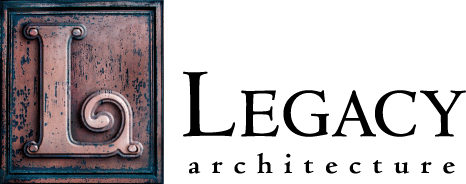Taking Their Place in History
Four City Churches Named to National Register
Benson, Dan. The Sheboygan Press. April 3, 2010.
Four churches near downtown Sheboygan have been named a historic zone by the National Register of Historic Places, the first such designation in the city.
Forming what's called the Downtown Church Historic District, the four churches, all within a block of one another, are: Grace Episcopal Church, 1011 N. Seventh St., built from 1867-71; St. Luke United Methodist Church, 623 Ontario Ave., built from 1929-30; Hope Reformed Church, 612 Ontario Ave., built in 1937; and St. Mark Lutheran Church, 1019 N. Seventh St., built in 1969.
Combined, they form "one of Sheboygan's most architecturally intact historic religious areas," according to the application submitted last year by the city and the Wisconsin Historical Society.
According to a press release from the Wisconsin Historical Society, the churches "are representative of the prevailing architectural styles of their time, including High Victorian Gothic, late Gothic Revival, elements of the Tudor Revival and Contemporary architectural styles, reflecting a century of religious architecture."
"One of the challenges of serving a church in an urban area is to find a way to use existing historic locations in new ways," said the Rev. Bill Te Winkle, Hope Reformed's senior pastor. "But we do want to maintain the historic integrity of the building. While the stones are simply stones, they represent how God has been faithful to our congregation for many decades."
"We're absolutely delighted," said Bernie Markevitch, a member of Grace Episcopal Church who served on the committee that helped put together the application. "We take great pride in our architecture. That kind of thing is very important to us."
The state historical society last year created a downtown historic district. From that, an application was made to the National Park Service to create the churches zone.
Being listed in the National Register makes properties in the district eligible for grants and tax credits while not restricting the property owners in the use of their property. It also means the district will be advertised as a historic site and help draw visitors to the area, generating tourist dollars for the city, officials said.
The Rev. Roger Clapp, senior pastor of St. Luke, said the designation recognizes the church's architectural attributes, especially its stained glass windows, which he called "tremendously beautiful."
Clapp said the designation won't "add to our worship membership, but it appeals to people interested in history and downtown churches. Hopefully people will come and observe it."
The register is the official national list of historic properties in America and is maintained by the National Park Service in the U.S. Department of the Interior. The Wisconsin Historical Society administers the program within Wisconsin.
Historical highlights of the churches:
Grace Episcopal Church
The church's rectory, 630 Ontario Ave., was built in 1855. Construction on the church began in 1867. Wisconsin's first Boy Scout troop was formed at Grace in 1911, one year after the formation of the Boy Scouts of America. The adjoining "Guild Hall" was built in 1910 and housed Sheboygan's first gymnasium. The last addition to the church, built in 1958, was designed by Richard Philipp, who also designed much of the Village of Kohler. Philipp's addition was paid for by Lillie Babette and Herbert C. Kohler as a memorial to their father, John Michael Kohler, and other family members who were members of the congregation there.
Hope Reformed Church
Founded as a congregation in 1891 by Dutch immigrants, Hope Reformed was the first Reformed church in the City of Sheboygan. The present sanctuary was built in 1938 of Stevens Point brownstone, as was the rectory next door. The rectory has since been converted to a youth center and is open to community organizations. Its sanctuary is marked by distinctive arched timbers supporting the roof.
St. Luke United Methodist Church
St. Luke "set a standard by which future Late Gothic Revival churches in Sheboygan were designed," according to the application to the National Park Service. A fleche - the French word for "arrow" - "is the crowning feature of the exterior treatment," according to a 1930s account of the church. Inside, one of the church's distinctive features is its richly carved wood paneling. "It is amazing that such a beautiful church could be constructed and completed at the forefront of the Great Depression," according to the application. The name was changed from First United Methodist Church to St. Luke in 1968, Clapp said.
St. Mark Lutheran Church
The first English-speaking Lutheran church in Sheboygan was founded in 1909 and celebrated its centennial last year. The present church building was dedicated in May 1969. The distinctive feature of the church is a sanctuary that has a "high, steeply pitched roof modernized with a single, concave slope," according to the application. The church "follows the pattern language set by the other (churches) in a contemporary modern way."

-High.jpg)